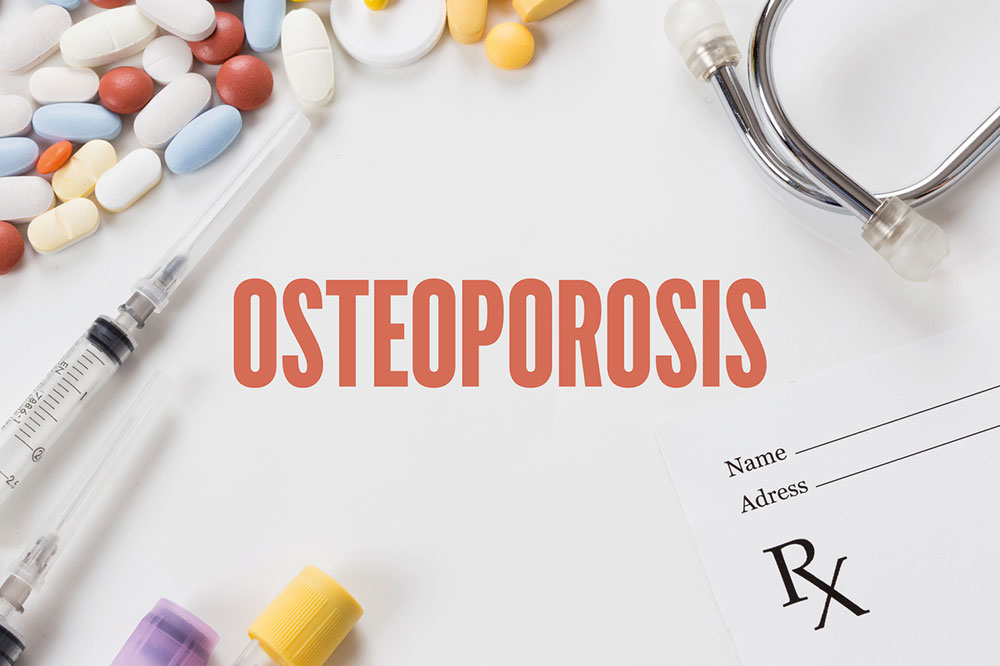
Osteoporosis – Causes, symptoms, diagnosis, and management
Osteoporosis affects millions of people worldwide. It is a health condition that weakens the bones, making them more likely to get fractured. The disorder can cause severe pain and even disability in extreme cases. While some risk factors for osteoporosis, like age and genetics, are beyond control, making lifestyle changes can help reduce susceptibility. This article discusses the causes, signs, and treatments for osteoporosis and the steps to protect the bones and prevent the condition.
Causes and risk factors
Osteoporosis causes the bones to become weak and brittle, making them more likely to fracture and break. While anyone can develop the disorder, certain risk factors increase an individual’s susceptibility. These risk factors include:
- Age
Bone mass naturally decreases with age, putting people at a higher risk of osteoporosis. Women over 65 are particularly susceptible due to menopausal hormone changes, which cause a further loss in bone density. - Family history
The risk may increase if one’s family member has osteoporosis. - Poor nutrition
A meal plan low in calcium increases the chance of developing osteoporosis since calcium helps build strong bones. - Lifestyle choices
An inactive lifestyle contributes to weaker bones. - Health conditions
Several health conditions can weaken the bones, including thyroid disorders, celiac diseases, and rheumatoid arthritis.
Symptoms
When affected by osteoporosis, the bones become weaker and more brittle over time. This can cause serious complications, such as fractures and chronic pain. The best way to determine whether one has this disorder is to look out for the following signs:
- Loss of height
As the bones weaken, they can collapse or compress, causing a person’s height to decrease. So, if one appears to have grown shorter, they should get checked for osteoporosis. - Back pain
Osteoporosis can cause fractures in the vertebrae, leading to back pain. If a person has persistent back pain, it is worth getting checked by a doctor. - Weak or brittle nails
Brittle or weak nails can indicate poor bone health or osteoporosis. - Fractures
If a person suffers a fracture even due to a minor impact, it could be a sign of osteoporosis. Fractures in the wrist, hip, or spine are particularly common. - Poor posture
When the spine weakens, it can cause poor posture and a “hunchback” appearance.
It is crucial to note that many people do not experience the symptoms until they have suffered a fracture. That is why individuals should get regular bone density tests as they age, particularly if they are at a higher risk for the condition. By diagnosing the disease early, one can take steps to slow its progression and prevent complications down the line.
Diagnosis
If a person experiences the signs of osteoporosis and thinks they have developed the condition, they should visit a doctor. A diagnosis is made using several methods:
- Bone density test
This is the most common test used to measure the bones’ density accurately. It is usually performed on the spine, hip, and wrist using a specialized X-ray machine called dual-energy X-ray absorptiometry (DXA). - Health history
The doctor may evaluate the patient’s and their family’s health history to determine whether they are at risk for osteoporosis. - Physical exam
The doctor may check for signs of bone loss during a physical exam.
Treatment and prevention
When someone is diagnosed with osteoporosis, the healthcare provider may develop a treatment plan that includes the options discussed below. These options may also help prevent the condition:
- Getting enough calcium
Calcium is a crucial nutrient for bone health as it strengthens the bones and protects them from injury. Hence, it is essential to get enough calcium through food. Cheese, yogurt, almonds, and canned sardines are some of the best sources of calcium to include in the food plan. - Getting enough vitamin D
Vitamin D helps the body absorb calcium, making it equally essential for strong bones. One can acquire vitamin D from sun exposure or eating foods rich in this vitamin, such as fatty fish, beef liver, and egg yolks. - Lifestyle changes
One can manage osteoporosis by making simple lifestyle changes like staying active. Regular exercise can help improve bone density and prevent osteoporosis. Regular bone density screenings are also crucial to monitor the condition and prevent further bone loss. - A balanced food plan
Eating well-balanced meals with plenty of fruits and vegetables can help provide the necessary nutrients for bone health. - Physical therapy
If a person already has a fracture, physical therapy can help them regain strength and mobility. Physical therapists teach people exercises that target the muscles and bones most affected by osteoporosis.




